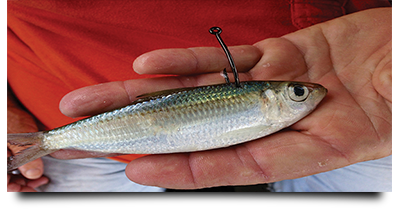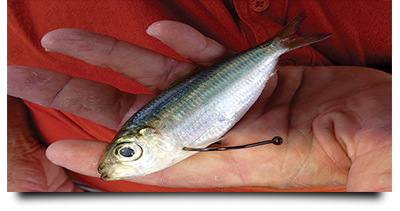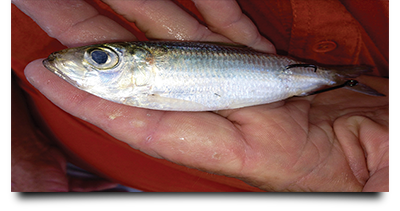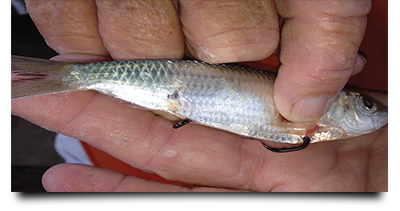Ready to fish? Well stop in at Cape Tool and Tackle to pick up your live bait prior to hitting the waters. We have included 5 different techniques in baiting your hook.
5 Techniques in Baiting Your Hook.
Tip 1: Nostrils
Whether you are fishing a hardtail, menhaden, pinfish, goggle-eye, pilchard or herring, “nostril hooking” restricts less of their natural action. This is ideal for surface live-baiting, such as when drifting offshore, around bait schools, and through inlets and passes for surface-oriented fish. When nostril-hooked, the bait swims at or near the surface, keeping pace with the boat’s drift or slow-trolling rate.
Tip 2: Dorsal
Hooking a bait in front of its -dorsal is deadly for kite-fishing, slow-trolling and still-drifting; it generates action, and the aft placement nabs “short-striking” fish. Hooking in front of the dorsal fin forces a bait to swim head-down and more frantically. These “distress” vibrations draw strikes. The swimming attitude is like a deep-diving swimming plug.
Tip 3: Throat
Throat hooking forces a bait into the depths, perfect for midlevel fish. It’s a proven tactic when free-lining from a stationary position to jetties, seawalls, pilings or bait schools, as well as for bottom-fishing from an anchored boat. It’s also good when slow-drifting. To manipulate the bait, free-line it, and then pause the line for several seconds and continue to free-spool. Repeat until the bait is in place. Every pause prompts it to swim harder, and a low, forward hook placement forces the bait to swim deeper.
Tip 4: Anal Fin
A bait hooked near its anal fin can be manipulated into a specific area. It’s also a great way to make baits swim away from a stationary platform, like a pier, jetty, bridge, beach or shoreline. Similar to a throat-hooked bait, without forward momentum, the bait can’t breathe; it panics and swims forward aggressively, enabling the angler to guide it farther away, or to a specific spot.
Tip 5: Anal Vent
When anchored and live-baiting for grouper and snapper with smaller live baits such as pilchards, herring or pinfish, threading the hook through the bait’s anal cavity and out near its stomach causes the bait to wobble and dart head-up, as if it’s injured. These panicked vibrations and the action of the distressed bait fish triggers predators to strike. The mid-bait hook placement virtually guarantees a solid hookup.
Information About Fish You'll Find In Our Waters







